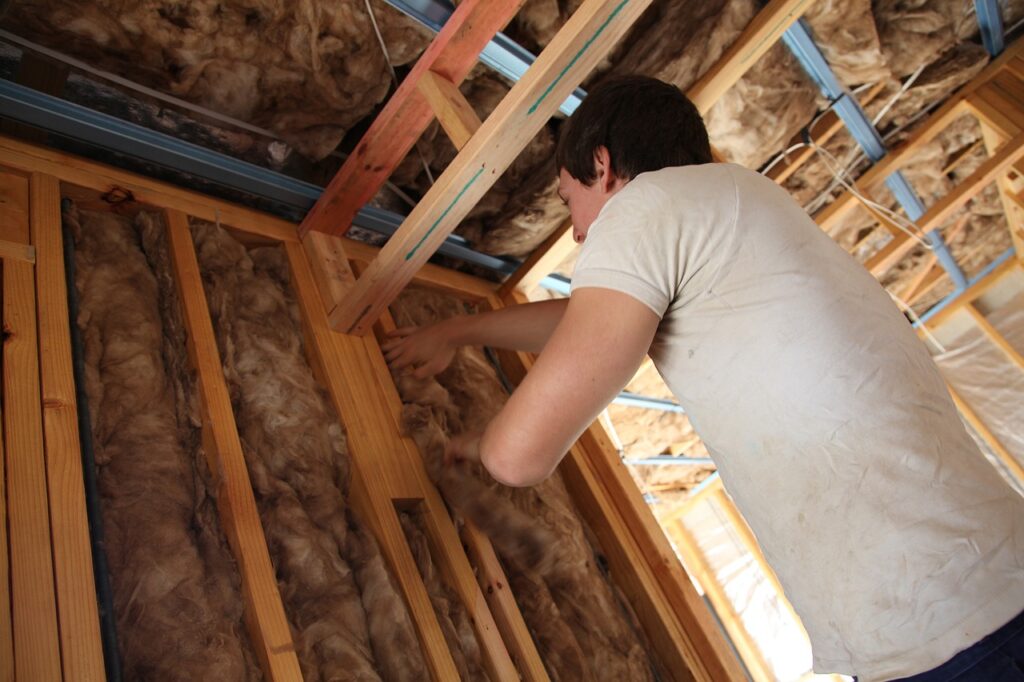Experienced homeowners know that having a properly insulated roof is a must. More often than not, they will spend considerable amounts of money on adding extra insulation and ensuring that their roof is in top condition. But, if you are a newbie homeowner, you might think that roof insulation isn’t as important as people make it out to be, and that insulating your walls should be enough. To help shine a light on this subject, we will elaborate on why insulating your roof is essential. Furthermore, we will give you the best roof insulation options so that you have an easy time making your choice.
Why insulating your roof is important
The first thing to remember is that investing in roof insulation is almost always a good idea. Simply put, it is a terrific way to save money in the long run as it makes your home energy efficient. Depending on how well you insulate your home, you can save up to 30% of the energy that you would otherwise waste. Add that up over time, and you’ll soon see how cost-effective it is to invest in insulation.
Apart from this, insulation serves as an extra layer of protection. Over time, even the best roofs can yield to moisture and bad weather. Once that happens, water will seep through your roof and cause considerable damage in a short period. If mold forms, you may have to install a completely new roof. Not to mention that structural damage can put your entire home at risk. All things considered, investing in roof insulation is always a good idea.
The best roof insulation options
The good thing about roof insulation is that it doesn’t have to cost a fortune. But, to make this possible, you need to do a bit more research. Essentially, there are tons of home improvements that can be affordable. But, it is paramount that you have a complete understanding of your home and its requirements before you start searching for cheap renovation ideas, and that you go through the trouble of finding good contractors to help you out. Only by doing so can you ensure that any home improvement, including insulation, is not only practical but also budget-friendly.
Spray foam
As one of the most common roof insulation methods, we feel obliged to first mention spray foam. This is a thick coat of polyurethane that contractors apply to the inside of your roof. It quickly spreads and covers any cracks or imperfections that are on the inside of your roof. As the foam dries, it bonds together slates and tiles (depending on what you spray it on) and helps protect your roof from ice dams, mold, moisture, temperature fluctuations, etc.
The great thing about spray foam is that it seals off all gaps, making your roof quite resistant. This reduces your overall utility bill, as you’ll have an easy time maintaining temperature. And it makes your home more eco-friendly. The potential downside to spray foam is that it can be a considerable investment. A professional contractor will charge you between $1,500 and $3,000 for applying it. And unfortunately, spray foam is not something you can DIY.
Insulation boards
A more DIY-friendly option is to go with insulation boards. These come in different options, the main ones being:
- polyisocyanurate.
- expanded polystyrene (EPS)
- extruded polystyrene (XPS)
The first, polyisocyanurate (polyiso for short), usually comes with a foil facing. It serves as a radiant barrier and helps give polyiso the highest R-value. Unfortunately, it is also the most expensive.
EPS is your best option if you are running on a limited budget. It gives a decent R-value while being the most cost-friendly.
XPS is quite similar to EPS, although it comes with some noticeable improvements. Unfortunately, it (like EPS) can deteriorate if exposed to sunlight and can be flammable.
Batt blanket insulation
Batt blanket is the traditional option when it comes to roof insulation. These are rolls made out of fiberglass, which you can place on your wall. They are seen as the most cost-effective option as they are easy to install and relatively cheap to purchase. But unfortunately, they don’t perform as well regarding heat retention. This makes batt blanket insulation energy inefficient when compared to other options.
Structural insulated panels
These panels are premade boards with insulation foam placed between wooden layers. These panels are quite useful as a building material, as they are durable and resistant. They are beneficial as replacements for wood frames as they can sustain 10 pounds per square foot of dead load. When installed, these panels provide excellent energy efficiency and thermal resistance. But, they can be vulnerable to moisture. Considering this and how big they can get, it should come as little surprise that you need to hire a contractor to install them for you. If you already have these panels installed and need to move them to your new home, the crew from preferred-movers.com advises hiring professionals to relocate them for you.
A final note about roof insulation
The options we’ve outlined are just some of the many you have at your disposal. Now, more than ever, people are pretty creative regarding roof insulation and its different forms. So, whether you are designing a new home or improving your current one, it is best to carefully consider what your home needs.
If you are located in an area with a lot of sunshine, the best roof insulation options are those that put temperature insulation first. On the other hand, if you live in an area where moisture is a constant issue, you need to do your best to prevent it. All in all, your home’s location and structure will dictate what roof insulation will fit you. The one thing we would advise you against is trying to save money on insulation. Doing so is not only shortsighted but also quite dangerous. Finally, consulting roofing experts in your area is your best bet for a safe and secure home.

